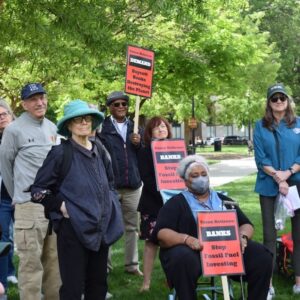September 1, 2016
Department of Labor Changes Rules for Annual LM Reports
This article first appeared in the September-October 2016 issue of The American Postal Worker magazine.)
All APWU local and state unions that receive dues rebates (DCO checks) from the national union must file an annual financial report with the Department of Labor (DOL). The report is required by the Labor Management Reporting and Disclosure Act (LMRDA).
Labor unions are required to report all revenue and expenditures for the year within 90 days after the end of the local’s fiscal or accounting year. The report is considered a public record and will be posted on the DOL website, www.dol.gov.
The amount of a local’s annual receipts determines which of three reports the union must file. “Receipts” are income from dues rebates, interest on investments, rental income and income from the sale of aprons and other union gear. Locals should not include savings and investments when determining which report to file.
- LM-4: Annual receipts of less than $10,000
- LM-3: Annual receipts of $10,000 to $249,999
- LM-2: Annual receipts of $250,000 or more
New officers should verify that previous administrations have been submitting the appropriate LM reports. Additionally, as part of the local audit process, trustees should also verify that the reports have been filed.
Mandatory Electronic Filing
In July, the Office of Management and Budget approved changes that require filers of the Forms LM-3 and LM-4 to submit the reports electronically starting with fiscal years that begin on or after Jan. 1, 2017. (LM-3s and LM-4s for this fiscal year may be filed via hardcopy.)
The new rules also offer temporary and continuing hardship exemptions when electronic filing will cause undue burden or expense.
LM-2 filers – locals with $250,000 or more in total annual receipts – have been required to submit their reports electronically since 2005. OMB’s recent rule changes eliminated the continuing hardship exemption for Form LM-2 filers.
When filing electronically, labor unions use the Electronic Forms System, which allows anyone with a web-enabled computer to complete, sign, and file the reports without any cost and without downloading special software. Local unions that don’t have an Internet-connected computer can file the reports from any publically-accessed Internet-enabled computer.
Instructions for filing LM reports electronically and a tutorial on the Electronic Forms System (EFS) have been posted on the APWU webpage.
Department of Labor officials believe there are many benefits to electronic filing. Electronic reporting contains error-checking and trapping functionality, as well as online, context-sensitive help, which improves the completeness and accuracy of the reports.
Electronic filing is more efficient for reporting entities, results in more immediate availability of the reports on the agency’s website, and improves efficiency in processing and reviewing the reports to ensure compliance. In contrast, paper reports must be scanned and processed for data entry before they can be posted online for disclosure, which delays their availability for public review.
The Office of Labor Management Standards (OLMS) will allow filers to apply for a temporary hardship exemption seeking additional time to complete the report electronically. However, the filers must submit paper forms in the interim.
Additionally, Form LM-3 and LM-4 filers can apply for a continuing hardship exemption, which permits them to delay electronic filing for as long as a year. Please remember that unions that ask for a hardship extension must still file a paper copy of the LM form!
The Secretary-Treasurer’s Department will offer web training in February and March for local officials who need assistance with electronical filing. Please contact Roosevelt Stewart at 202-842-4215 or RStewart@apwu.org if you need immediate assistance. 4
First Raise of New Contract Implemented in
August; Back Pay Expected in November
The first salary increase of the 2015-2018 Collective Bargaining Agreement was implemented on Aug. 6, 2016, and appeared in paychecks dated Aug. 26. Career employees received a raise of 1.2 percent and Postal Support Employees (PSEs) received a raise of 43 cents per hour.
Coinciding with the raise was a dues increase, in accordance with Article 16.2(a) of the APWU Constitution and Bylaws. Dues for career employees were increased by 74 cents per member per pay period, with 49 cents of the increase going to locals and state organizations and 25 cents going to the national union; dues for PSEs were increased by $1.03 per member per pay period, with 69 cents of the increase going to locals and state organizations and 34 cents going to the national union.
The official start date of the raise was Nov. 14, 2015, so retroactive pay for the period from Nov. 14, 2015, through Aug. 5, 2016, will be issued and is expected on Nov. 18, 2016.
Career employees will also receive a 1.3 percent raise on Nov. 26, 2016, and a 1.3 percent raise on Nov. 25, 2017, along with cost-of-living adjustments in March and September each year if there is a sufficient increase in the Consumer Price Index.
PSEs (who do not receive COLA raises) will also receive a 2.3 percent increase effective Nov. 26, 2016, and a 2.3 percent increase effective Nov. 25, 2017, along with a 20-cent per hour increase on May 13, 2017, and a 21-cent per hour increase on May 26, 2018.



